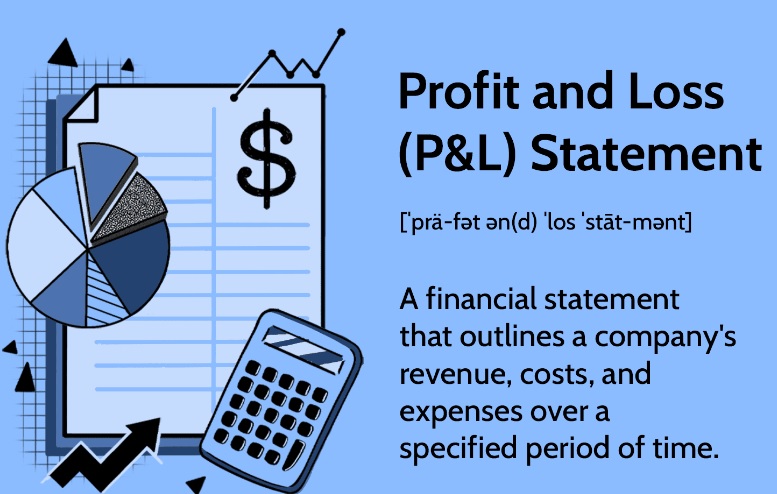In the world of finance, understanding profit and loss statements (P&L) is a critical skill. A profit and loss statement, also known as an income statement, is a financial statement that summarizes the revenues, costs, and expenses incurred during a specific period of time, usually a month, quarter, or year. In this article, we will dive deeper into the concept of P&L, its significance, and how to prepare and interpret one.
What is a P&L Statement?
A P&L statement is a financial statement that summarizes a company’s revenues and expenses during a particular period. It is a snapshot of a company’s financial performance and helps determine its profitability. The statement is typically divided into two parts: revenue and expenses. Revenue includes all the money a company has earned from sales or services, while expenses include all the costs incurred to generate that revenue. The difference between the two is the company’s profit or loss.
Why is a P&L Statement Important?
A P&L statement is an essential tool for businesses to evaluate their financial health and make informed decisions. It helps businesses to:
Track their revenue and expenses over time
Identify areas of inefficiencies in their operations
Make adjustments to improve profitability
Plan for the future by predicting future revenues and expenses
Evaluate the effectiveness of their pricing strategy
How to Prepare a P&L Statement
To prepare a P&L statement, you will need to follow these steps:
Start with the revenue section. Include all the income generated during the period, including sales revenue, interest income, and other sources of revenue.
Deduct the cost of goods sold (COGS). COGS includes all the direct costs of producing the product or service sold by the company.
Calculate the gross profit. Gross profit is the difference between revenue and COGS. It represents the amount of money the company has left to cover its operating expenses.
Deduct operating expenses. Operating expenses include all the expenses incurred to operate the business, such as rent, utilities, salaries, and marketing expenses.
Calculate the operating profit. Operating profit is the difference between gross profit and operating expenses. It represents the profit generated from the company’s core operations.
Deduct non-operating expenses. Non-operating expenses include expenses not related to the company’s core operations, such as interest expenses and taxes.
Calculate net profit or loss. Net profit or loss is the difference between operating profit and non-operating expenses. It represents the overall profitability of the company.

Interpreting a P&L Statement
Interpreting a P&L statement involves analyzing the various sections of the statement to evaluate a company’s financial performance. Here are some key metrics to look for:
Gross profit margin: This represents the percentage of revenue left after deducting COGS. A higher gross profit margin indicates a more efficient and profitable business.
Operating profit margin: This represents the percentage of revenue left after deducting operating expenses. A higher operating profit margin indicates a more efficient business.
Net profit margin: This represents the percentage of revenue left after all expenses have been deducted. A higher net profit margin indicates a more profitable business.
Common FAQs
How often should a company prepare a P&L statement?
A P&L statement should be prepared at least once a year, although some companies may choose to prepare them quarterly or monthly.
Can a P&L statement be negative?
Yes, if a company’s expenses exceed its revenues, the P&L statement will show a negative net profit or loss.
What is the difference between a P&L statement and a balance sheet?
A P&L statement summarizes a company’s revenues and expenses during a specific period, while a balance sheet provides a snapshot of a company’s financial position at a specific point in time.
How does a P&L statement help businesses make decisions?
A P&L statement helps businesses to identify areas of inefficiencies, make adjustments to improve profitability, plan for the future, and evaluate the effectiveness of their pricing strategy.
What is the importance of gross profit margin?
Gross profit margin is important as it represents the percentage of revenue left after deducting COGS. A higher gross profit margin indicates a more efficient and profitable business.
Conclusion
A P&L statement is a critical financial statement that summarizes a company’s financial performance over a specific period. It provides valuable insights into a company’s revenue and expenses, helps identify areas of inefficiencies, and enables businesses to make informed decisions. By understanding how to prepare and interpret a P&L statement, businesses can improve their financial health and maximize profitability.